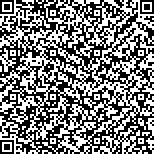| 本文已被:浏览次 下载次 |

码上扫一扫! |
|
|
|
| Effecting mechanism of organic salts NaSal/2SHNC on self-assembly of cationic surfactant R14HTAB |
|
SUN Haoyu1, ZHANG Yan2, GAO Yang3, LI Jiawei2, ZHANG Yingnan2, YAN Youguo2, ZHANG Jun2
|
|
(1.Drilling Technology Research Institute of Shengli Petroleum Engineering Company Limited,SINOPEC, Dongying 257000, China;2.School of Materials Science and Engineering in China University of Petroleum(East China), Qingdao 266580, China;3.Research Institute of Exploration and Development, Xinjiang Oilfield Company, Karamay 834000, China)
|
| Abstract: |
| The self-assembly process and the mechanical property of 3-alkoxy-2-hydroxypropyltrimethylammonium halide(R14HTAB) modulated by two kinds of organic salts of sodium salicylate (NaSal) and 2-hydroxynaphthalene-3-carboxylate (2SHNC) were investigated through the coarse-grained molecular dynamics (CGMD) simulation.The results show that the formation of spherical micelles undergoes two stages:nucleation and cluster fusion. The formation of worm-like micelles includes three stages:nucleation, cluster fusion and micelle fusion.And the vesicle formation has five stages:nucleation, cluster fusion, micelle fusion, disc-shaped micelles and disc-shaped micelle coiling. Compared with NaSal, 2SHNC presents stronger ability to promote micelle fusion, which can be confirmed by two facts:the first is that the work-like micelle could be obtained at lower 2SHNC concentration; the second is that the 2SHNC could promote to form more complex micelle of vesicle. Furthermore, the work-like micelle promoted by the 2SHNC exhibits stronger tensile strength tested by non-axial stretching, meaning that the 2SHNC could induce to form longer worm-like micelle and possesses better viscoelastic. |
| Key words: organic salt type cationic surfactant self-assembly viscoelasticity |
|
|